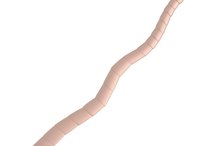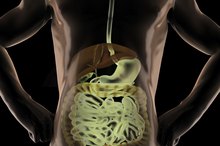Causes of Liver Cysts
Cystic lesions include hepatic cysts, which are cysts that occur in the liver. While most hepatic cysts are harmless, some are indicative of more serious health issues. Liver cysts can become enlarged or infected, causing abdominal pain, an obstruction or an infection of the bile duct. Cysts in the liver can be detected with a CT scan or ultrasound. When a cyst is found in an individual, that person should submit herself to medical testing to rule out any serious diseases or conditions that may be the root cause. Hepatic cysts are symptoms of a variety of serious diseases that can lead to renal failure.
Polycystic Liver Disease
Hepatic cysts can occur as a result of polycystic liver disease. Polycystic liver disease is exactly as it sounds: the disease causes a large number of cysts to occur in the liver. Polycystic liver disease is a congenital disease caused by a genetic abnormality. Patients who have polycystic liver disease also may suffer from cysts in their kidneys, known as polycystic kidney disease. Polycystic liver disease is a serious, life-threatening illness that can lead to renal failure.
Echinococcus granulosus
What Are the Treatments for a Liver Cyst?
Learn More
Liver cysts can occur as a result of a parasite, Echinococcus granulosus. Echinococcus granulosus is common in areas where sheep and cattle are raised. The egg larvae of the parasite infiltrates the bowel, and encyst themselves to the bowel wall. The cysts, which contain the larvae, are referred to as hydatid cysts. This is a serious parasitic infection that can cause extreme trauma to the liver. Drug treatment and possibly surgery to remove the parasites will be necessary.
Cystadenoma
Cystadenoma is a condition that causes an individual to be predisposed to developing cysts. It commonly occurs in middle-aged women. Cystadenoma can cause cysts anywhere in the body, including the ovaries and kidneys. Cystadenoma can cause abdominal pain but are generally benign. However, there is an increased risk of malignant cysts or cysts that could cause renal hemorrhage. Surgery may be required if the particular case of cystadenoma causes severe symptoms.
Liver Tumors
What Are the Effects of Tapeworms in Humans?
Learn More
Tumors of the liver are commonly misdiagnosed as cysts. Some tumors may be benign and others malignant. Symptoms can include abdominal pain, weight loss, jaundice, fever and nausea. Clarification of whether an undesirable growth is a harmless cyst or tumor can be gained through liver function tests, biopsy or CT scans. Treatment for a malignant tumor will include surgery and radiation.
Hepatic Fibrosis
Hepatic fibrosis is a congenital disease that causes irregular scarring in the liver. The body zealously produces scar tissue, often resulting in cyst-like lesions. Excessive renal lesions can lead to liver failure and death. Treatment includes removing heavy metals from the body in hemochromatosis, multiple antibiotics and decompression of the the bile ducts.
Related Articles
References
Writer Bio
Based in Chicago, Annie Wang has been writing since 2008. Her work has appeared in World Architecture News and other online publications. She holds Bachelor of Arts degrees in English and art history from the University of California, Davis.






